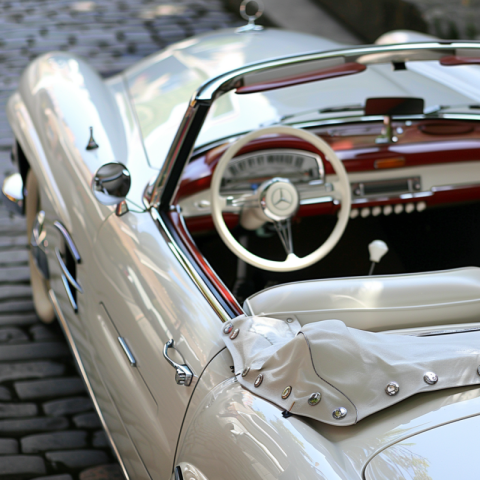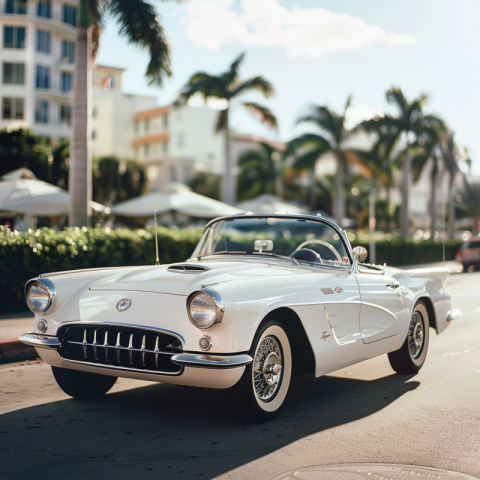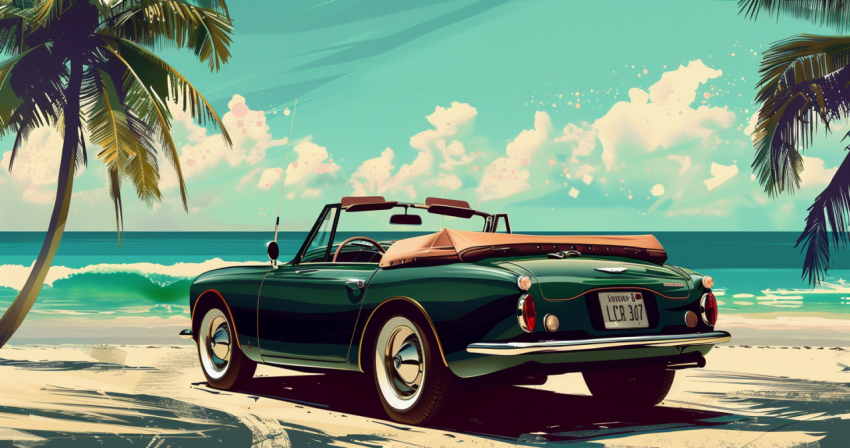











Keeping Classics Alive: A Guide to Vintage Car Restoration and Preservation
Vintage car restoration and preservation is a labor of love, a blend of mechanical skill, historical research, and artistic craftsmanship. It's about more than just fixing up an old car; it's about honoring the history, design, and engineering of a bygone era. Whether you're a seasoned restorer or a passionate newcomer, understanding the nuances of this craft is essential to bringing these automotive treasures back to their former glory.
Approaches to Restoration and Preservation:
There are several different philosophies and approaches to working with vintage cars, each with its own merits and considerations:
- Preservation: This approach focuses on maintaining the car's originality as much as possible. It involves repairing or replacing only what is absolutely necessary, with an emphasis on conserving the original parts, finishes, and even patina. The goal is to keep the car as close as possible to its condition when it left the factory or as it has authentically aged.
- Restoration: This involves returning the car to its original factory condition, often through a complete disassembly, refurbishment, or replacement of parts. There are different levels of restoration:
- Concours Restoration: The highest level, aiming for perfection and authenticity down to the smallest detail. These cars are often destined for shows and competitions.
- Full Restoration/Frame-Off Restoration: Removing the car's body from the frame completely. Every nut, bolt, part, and system is inspected and restored or replaced, piece by piece.
- Driver-Quality Restoration: Focuses on making the car mechanically sound and visually appealing, but may not be as meticulous as a concours restoration. The goal is to create a car that can be enjoyed on the road.
- Restomod: This approach combines restoration with modernization. It involves restoring the car's classic appearance but upgrading its performance, handling, safety, and comfort with modern components (e.g., new engine, brakes, suspension, air conditioning).
- Customization/Hot Rodding: This involves modifying the car's appearance and performance to the owner's personal preferences. It often includes significant bodywork, engine swaps, and other modifications that deviate from the car's original design.
The Restoration Process:
Restoring a vintage car is a complex and time-consuming process that typically involves the following stages:
-
Assessment and Planning:
- Research: Thoroughly research the car's history, specifications, and original features.
- Inspection: Carefully inspect the car's condition to determine the extent of the restoration needed.
- Documentation: Take detailed photographs and notes to document the car's original condition.
- Budgeting: Establish a realistic budget for the project.
- Sourcing Parts: Begin locating necessary parts, which can be a significant challenge for rare or older vehicles.
-
Disassembly:
- Carefully disassemble the car, labeling and cataloging all parts.
- Bag and tag all nuts, bolts, and other small components.
-
Bodywork:
- Rust Repair: Remove and repair any rusted areas, often requiring fabrication of new panels.
- Dent Removal: Repair any dents or damage to the body panels.
- Stripping: Strip the old paint down to bare metal.
- Priming and Painting: Apply primer and then the final paint, often multiple coats with sanding in between.
-
Mechanical Restoration:
- Engine Rebuild: Disassemble, clean, inspect, and rebuild the engine, replacing worn or damaged parts.
- Transmission and Drivetrain: Rebuild or replace the transmission, differential, and other drivetrain components.
- Brakes and Suspension: Overhaul the braking and suspension systems, replacing worn parts and ensuring proper function.
- Exhaust System: Replace or repair the exhaust system.
-
Electrical System:
- Rewire the car, replacing old or damaged wiring.
- Repair or replace electrical components like lights, gauges, and switches.
-
Interior Restoration:
- Upholstery: Repair or replace the seats, door panels, headliner, and carpeting.
- Dashboard and Trim: Restore or replace the dashboard, gauges, and other interior trim pieces.
-
Reassembly:
- Carefully reassemble the car, using the documentation created during disassembly.
-
Testing and Tuning:
- Thoroughly test all systems to ensure proper function.
- Tune the engine and make any necessary adjustments.
Challenges of Vintage Car Restoration:
- Rust: The most common and often most challenging problem, requiring extensive repairs or replacement of body panels.
- Parts Availability: Finding original or reproduction parts can be difficult and expensive, especially for rare or less popular models.
- Cost: Restoration can be a very expensive undertaking, often exceeding the car's market value.
- Time Commitment: Restoration projects can take months or even years to complete.
- Skills and Expertise: Restoration requires a wide range of skills, including mechanical, bodywork, electrical, and upholstery.
Rewards of Vintage Car Restoration:
- Preserving History: Restoring a vintage car helps preserve a piece of automotive history for future generations.
- Personal Satisfaction: The process of restoring a car can be incredibly rewarding, providing a sense of accomplishment and pride.
- Driving a Classic: Owning and driving a restored vintage car is a unique and enjoyable experience.
- Community: The vintage car community is a passionate and supportive group of enthusiasts who share a common interest.
- Investment Potential: While not always the primary motivation, some restored vintage cars can appreciate in value over time.
Conclusion:
Vintage car restoration and preservation is a challenging but rewarding pursuit that combines a love of classic automobiles with a dedication to craftsmanship and historical preservation. Whether you choose to preserve a car in its original condition, undertake a full restoration, or create a modernized restomod, the journey of bringing a vintage car back to life is a unique and fulfilling experience. It's a testament to the enduring appeal of these automotive icons and a way to ensure that their beauty, engineering, and historical significance continue to be appreciated for years to come. By understanding the different approaches, techniques, and challenges involved, enthusiasts can embark on this journey with knowledge and passion, contributing to the vibrant world of vintage car culture.
vintage car restoration, classic car restoration, car preservation, restoring old cars, car restoration process, concours restoration, frame-off restoration, restomod, car customization, hot rodding, rust repair, vintage car parts, classic car parts, car bodywork, engine rebuild, car upholstery, vintage car wiring, car painting, vintage car clubs, classic car shows, how to restore a car, cost of car restoration, tips for restoring a car, where to find vintage car parts, vintage car values, preserving car originality, maintaining a classic car, vintage car, classic car, antique car, muscle car, vintage car restoration near me, best classic cars to restore, easy classic cars to restore, affordable classic car restoration, DIY car restoration, professional car restoration, vintage car restoration tools, vintage car restoration supplies, restoring a car for beginners, complete guide to car restoration.

